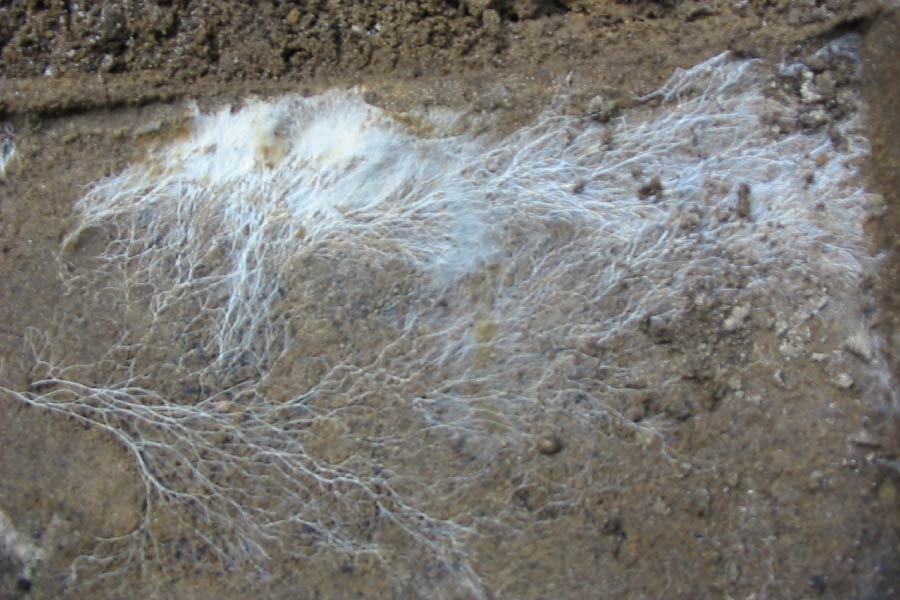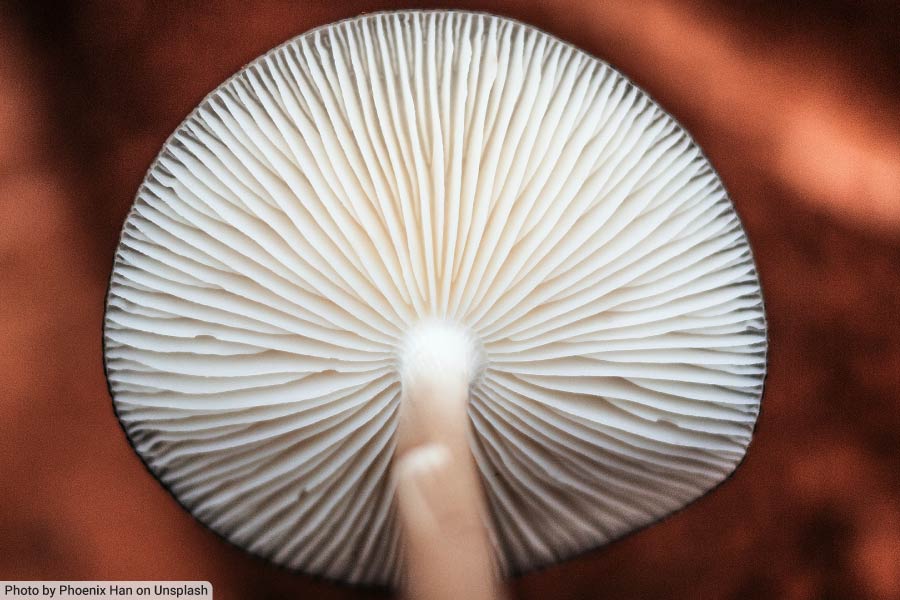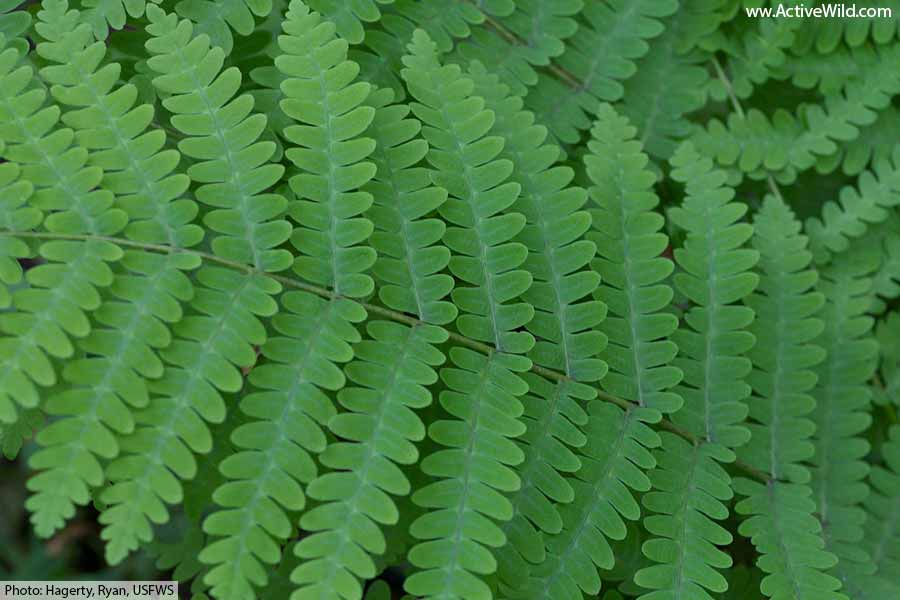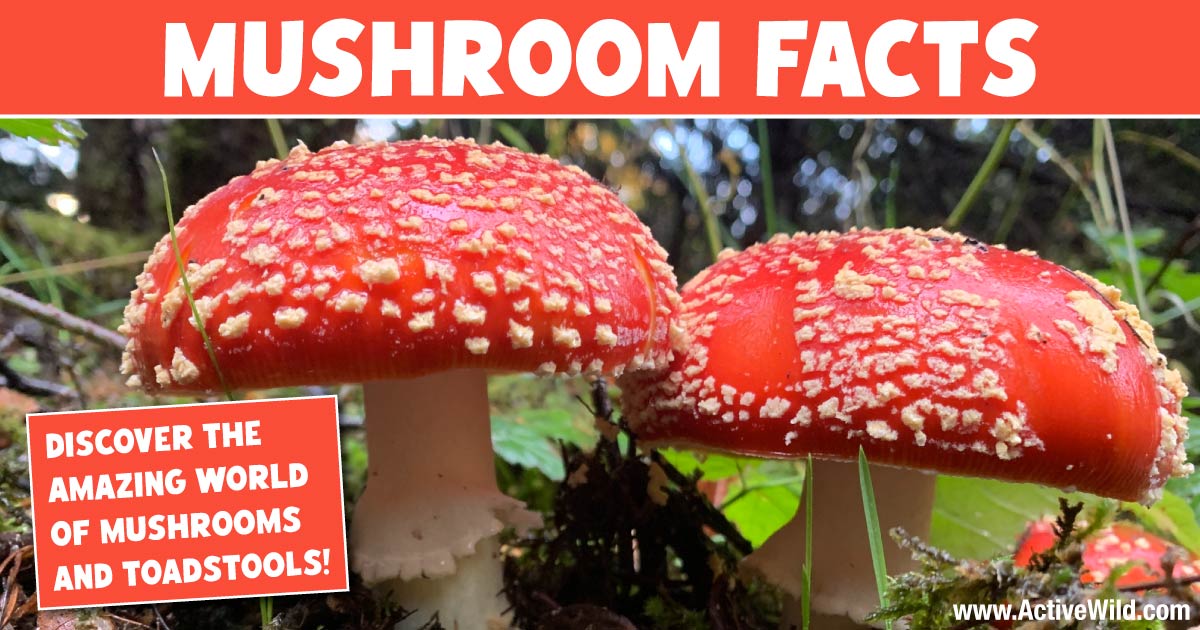Mushrooms, the umbrella-shaped fungi that mysteriously appear in meadows and woodlands as summer draws to a close, have fascinated humans for millennia.
The seasonal emergence of these fungal forms is only part of a life cycle that, for most of the time, is hidden out of sight.
Mushrooms are neither plants nor animals. Along with the other fungi, they occupy a kingdom all of their own. Mushroom-producing fungi perform a vitally important role in their ecosystems, decomposing organic material so that life can begin anew.
On this page, we take a closer look at mushrooms, finding out what they are, how they reproduce, and why they are important in our lives and in ecosystems around the world…
What is a Mushroom?
A mushroom is the fruiting body of a fungus. Its job is to produce and distribute spores – tiny reproductive cells from which new fungi can grow.

Fungi is the plural of fungus.
The mushroom is the visible part of a fungus. Hidden under the ground, the rest of the fungus consists of a network of root-like growths known as a mycelium (plural mycelia).

Only when conditions are right – usually when temperatures drop and humidity increases, (i.e., at the end of summer / beginning of autumn) – will the mycelium form the fruiting body known as a mushroom.
Parts Of A Mushroom

A typical mushroom is an umbrella-shaped object that consists of several parts, each of which has a name:
- Cap (Pileus): This is the umbrella-like top part of a mushroom. The cap protects the spore-producing structures beneath.
- Gills (Lamellae): Located under the cap, these thin, plate-like structures contain the spore-producing cells. Whereas a “typical” mushroom has gills, others may have pores or other structures.
- Stipe: This is the stem or stalk that holds the cap aloft. It may contain a protective veil as the mushroom matures.
- Spores: Mushroom spores are microscopic cells designed for reproduction. They’re released from the gills or other spore-producing structures and are dispersed by wind, water, or other means.
- Mycelium: Beneath the visible mushroom lies a complex network of thin, thread-like structures called a mycelium. This mycelium is the main vegetative part of the fungus and is present throughout the substrate it colonizes, be it soil, wood, or any other organic material. Some mycelia are microscopic; others can be vast, covering entire tracts of land.
Mushroom Vs Toadstool

The words “mushroom” and “toadstool” are usually interchangeable; both refer to the umbrella-shaped, above-ground part of a fungus. Although there is no official definition, the word “toadstool” usually refers to mushrooms that are poisonous.
Are Mushrooms Plants?
Mushrooms are not plants. Mushrooms belong to the fungi kingdom, whereas plants belong to the plant kingdom.
In fact, mushrooms (and all other fungi) are more closely related to animals than they are to plants!
A kingdom is a broad group of related living things. Humans, together with all other animals, belong to the animal kingdom, which has the scientific name Animalia. You can find out more about how species are categorized on this page: Animal Classification
The scientific name of the fungi kingdom is the same as its common name, i.e. Fungi.
The scientific study of fungi has its own name: mycology, and a scientist who studies fungi is known as a mycologist.
Fungi Vs Plants

The main difference between fungi and plants is that fungi are heterotrophs; in other words, fungi (like animals) are unable to produce their own food. Plants, however, are autotrophs, which means that they can produce their own food.
Plants make their own food by converting sunlight into nutrients via a process known as photosynthesis.
You can find out more about photosynthesis on this page: Photosynthesis Facts
Fungi do not photosynthesize. Instead, they acquire nutrients from organic matter, often breaking down dead or decaying material in the process.
Mushroom Life Cycle
A mushroom represents only the short-lived, fruiting body of a fungus, produced when conditions are right for the fungus to produce spores and reproduce. For most of its life, the fungus lives hidden in substrates (surfaces) such as soil or decaying wood.
The mushroom’s job is to produce and distributes spores, which is where the life cycle of a mushroom begins…
- Spore Release: Mature mushrooms release tiny spores from their gills or similar structures.
- Germination: When conditions are favorable (moisture, temperature, substrate), the spores germinate and produce thin, hair-like structures called hyphae. The hyphae secrete enzymes into the substrate, breaking down large molecules into smaller molecules that can be absorbed by the fungus as nutrients.
- Mycelium Formation: Individual hyphae grow and intertwine to form a dense, thread-like network known as mycelium.
- Mating: Each spore carries a specific mating type. For successful mating to occur, hyphae of different mating types need to encounter each other. When they do, they fuse together.
- Mushroom Development: Under the right conditions (often triggered by factors like rainfall, temperature changes, or available nutrients), the mated mycelium will produce a fruiting body, which is the visible part we recognize as a mushroom.
- Maturity and Spore Production: The mushroom matures, producing and releasing spores, thereby completing the life cycle. After spore release, the mushroom might persist for a while, but it will eventually decay or be consumed by other organisms. The mycelium, however, can continue to live in the substrate, potentially for many years, and can produce new fruiting bodies when conditions are right.
Why Are Mushrooms Important?

Mushrooms play several crucial roles, both in their ecosystems, and for humans:
- Decomposers: Many mushrooms break down dead organic material, recycling essential nutrients back into the soil, which in turn supports plant growth.
- Mycorrhizal Partnerships: Some mushrooms form symbiotic relationships with plants, helping plants absorb nutrients while receiving sugars in return. This relationship enhances soil fertility and plant health.
- Medicinal Properties: Several mushroom species have been used in traditional medicine for centuries, and modern research continues to explore their potential health benefits.
- Food Source: Many mushrooms are edible and nutritious, offering a source of protein, fiber, vitamins, and minerals.
- Environmental Remediation: Some mushrooms can absorb and concentrate heavy metals from their environment, a process being researched for bioremediation of polluted sites.
- Cultural and Spiritual Significance: Mushrooms have played roles in various cultures’ religious rituals, folklore, and traditions.
- Economic Impact: The cultivation and sale of edible and medicinal mushrooms contribute significantly to global economies.
World’s Largest Organism
The mushroom-producing fungus Armillaria ostoyae may be the world’s largest single living organism. The largest-known example is found in Oregon, United States; its mycelium is thought to cover 3.5 square miles / 9.1 km2, and may weigh up to 35,000 metric tons.
Due to its size, it has become known as the “Humongous fungus”. The species produces mushrooms known as “honey mushrooms”.
Types Of Mushrooms
There are around 150,000 known species of fungi. (As of October 2023, the Catalogue of Life, a global database of species, lists 154,537 mushroom species). There are around 14,000 mushroom-producing fungi species.
It is estimated that there may be millions of fungus species still to be officially described.
Mushrooms come in various shapes, sizes, and colors, ranging from the commonly known button mushrooms to the glowing bioluminescent varieties.
Some well-known types of mushrooms are listed below.
A good rule of thumb is to treat all mushrooms as poisonous unless you are absolutely sure that they are not – some poisonous species closely resemble edible species. Always seek the advice of an expert before picking mushrooms.
Cultivated Mushroom / Agaricus bisporus

Scientific Name: Agaricus bisporus
Continent(s) Found: Europe, Asia, North America
Habitat: Grasslands
Description: Agaricus bisporus is a commonly cultivated edible mushroom known by various names such as the button mushroom, white mushroom, and portobello mushroom.
It has a white to brown cap and a central stem, and is consumed in various culinary dishes worldwide. The mushroom matures from a small, rounded “button” stage to a larger, flat-capped form.
Fly Agaric

Scientific Name: Amanita muscaria
Continent(s) Found: Europe, Asia, North America
Habitat: Woodlands, often with birch and pine
Description: Iconic red cap with white spots. Toxic and hallucinogenic.
Oyster Mushroom

Scientific Name: Pleurotus ostreatus
Continent(s) Found: North America, globally widespread
Habitat: Decaying wood of hardwood trees
Description: Fan-shaped, usually white to light brown, grows in shelf-like clusters.
Golden Chanterelle

Scientific Name: Cantharellus cibarius
Continent(s) Found: Europe
Habitat: Hardwood forests, especially near oaks
Description: Bright yellow or orange, funnel-shaped, with a fruity aroma. A popular wild edible mushroom. Similar, closely-related species are found in North America.
Destroying Angel

Scientific Name: Amanita bisporigera (and other Amanita species)
Continent(s) Found: North America
Habitat: Woodlands
Description: Pure white with a smooth cap, white gills, and a bulbous base. Extremely toxic.
Honey Mushroom

Scientific Name: Armillaria mellea
Continent(s) Found: North America, Europe
Habitat: Base of trees and woody shrubs
Description: Golden-brown cap with a sticky texture, white gills, and a white ring on the stalk.
Discover More With Active Wild
You can find out more about plants on this page: Plants – The Ultimate Guide
Visit our main animals page for links to animal information and a complete guide to the animal kingdom: Animals

